Panini Sutras: Claim made by the Cambridge University researcher is illogical, invalid and misleading
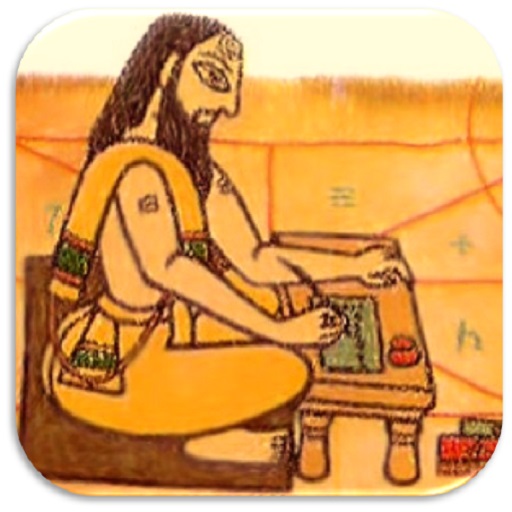
Strongly reacts Dr Shivamurthy Shivacharaya Mahaswamiji the seer of Sri Taralabalu Mutt, Sirigere, (Karnataka), India
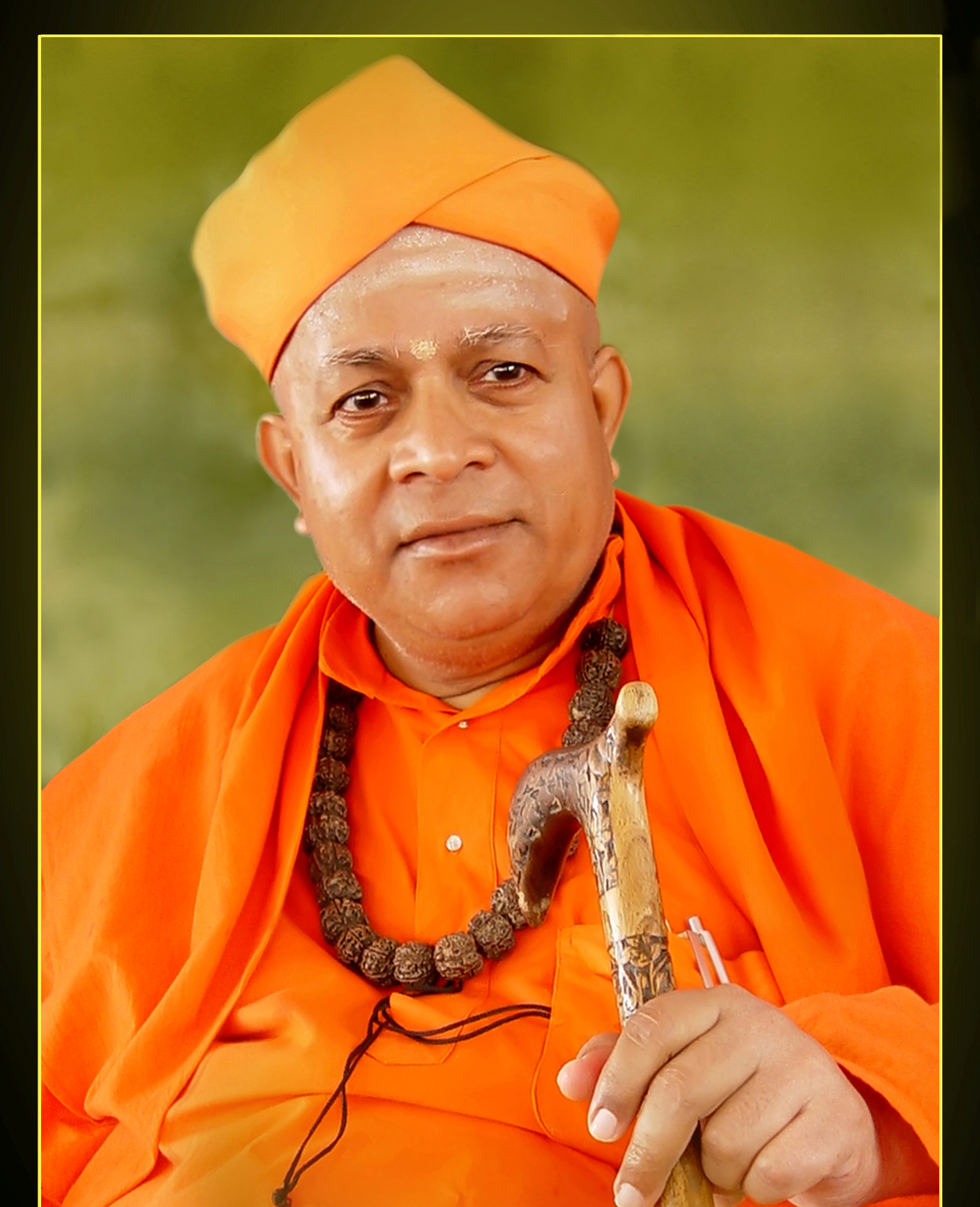
1. I received the following link recently from Acharya Srivatsa Goswamiji of Brindavan and Dr Ramanathan of Chennai whom I personally knew from the days of my doctoral studies in the Banaras Hindu University. The link was also sent to me by another good old friend of mine Dr Qamar Munir in Switzerland who was my hostel mate when I was doing postdoctoral studies in the University of Vienna way back in the years 1977-79. The link sent by them is about a PhD thesis on Panini, the great Sanskrit grammarian of 5th century BC.
https://www.cam.ac.uk/stories/solving-grammars-greatest-puzzle
2. The media has made sensational news that the young researcher of the Cambridge University has cracked the 2,500-year-old Sanskrit puzzle. I am shocked by the claim made by this researcher and I find his interpretation illogical, invalid and misleading. There is no puzzle to crack in the Panini Sutra “1.4.2 - vipratiṣedhe param kāryam”. This Sutra is well understood in the Indian tradition of grammarians. The researcher only is misinterpreting it to his convenience. The traditional understanding of this Sutra is: “In the event of a conflict between two rules of equal strength, the rule that comes later in the grammar’s serial order wins”. But the researcher tries to reject this meaning.
3. According to him, the word param in this Sutra refers to the right part in a Samhita (juxtaposition of words) and not to the Sutra of a higher number as has been understood in the traditional grammar. He fails to properly substantiate the word ‘vipratiṣedhe’ for his preference to select the Sutra applicable to the right part. There is also a general misconception in the minds of the western scholars that this rule refers to the Samjnas and not to any Sutra. One of the western scholars in the past went to the extent of even alleging that Katyayana was a rival of Panini. Actually, the Vārtikas of Katyayana are nothing but the amendments or supplements to the Sutras of Panini filling the gaps in the growth of Sanskrit language as it was spoken during his times.
4. The news report does not give full details of the claim made by this Cambridge University researcher. If more than one Sutra is applicable in a given context, the researcher wants us to select the Sutra applicable to the right part only and ignore the Sutras applicable to the left part whether the Sutra is of higher number or lower number. The two examples given by him are the nominal stems guru and mantra. The word form of ‘guru + ā’ in the instrumental case singular is ‘guruṇā’ and the word form of mantra + bhis in instrumental case plural is mantraih. It has not been fully illustrated in the news report how he has derived these words and what Sutras are applied to get the final word forms guruṇā and mantraih.
5. I checked it in our software Gaṇakaṣṭadhyāyī which consists of all the Sutras of Panini with English and French translations including the basic texts of Kāśikā, Siddhānta Kaumudī and Laghu Kaumudī. The software also gives the application (prakriyā) of the Sutras for any nominal stem with its derivational history (rūpa-siddhi). I have spent sleepless nights in developing this software on Panini’s Sutras as far back as 1994 (DOS version) which was demonstrated in the 9th World Sanskrit Conference held in Melbourne University, Australia. The revised windows version of it (ver. 2016) is made available on our website www.taralabalu.org/panini You may freely download, install in your system and check it for yourself. Ganakastadyayi Software Demo
6. If you select the Shabda Navigator under Shabdarupa menu given on the main page of our software, the word forms of all the standard examples (ajanta and halanta) given in the Laghu Kaumudi will be automatically generated. I am giving below the time taken by our software to process all the four thousand Sutras and give the word forms of all the standard examples in all the seven cases (vibhaktis) and numbers (vacanas). It has taken only 1 minute 25 seconds for giving all the word forms of 220 nominal bases as detailed below.
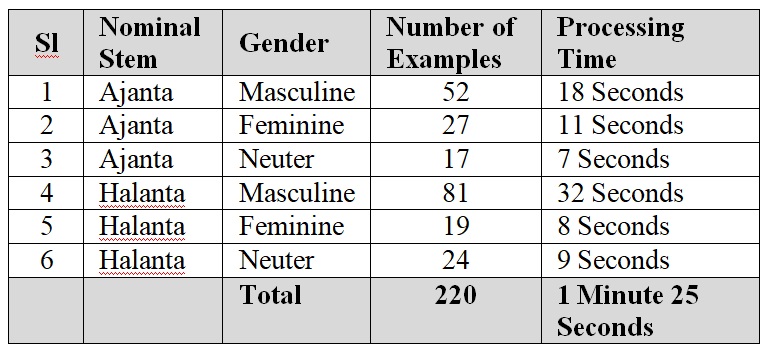
7. Our software also gives you the derivational history (rūpasiddhi) of every example wherein you can see what all the Sutras are applied at various steps yielding the final word form. These results are not stored in the database but are automatically generated by our software. You can key in any nominal stem of your choice and see the declension of the word in all the seven cases (vibhaktis) and numbers (vachanas) with its derivational history (rūpasiddhi). If you find any error in the derivation of the word that you key in, it is definitely a bug in programming our software Gaṇakāṣṭādhyāyī and not any error in the Sutras of Panini. The users may feel free to notify such errors to me (swamiji@taralabalu.org) so that they can be fixed. Panini took care to minimize the words while formulating his Sutras whereas we have taken care while writing the program code of our software to minimize the processing time to yield the results as quickly as possible.
8. While writing the program code of Gaṇakaṣṭadhyāyī, I have strictly followed the traditional method of interpreting the Sutras of Panini and have tried to preserve the ancient wisdom of the grammatical luminaries of two and a half millennium. I find no issue in getting the correct word form in the computer as per tradition.
9. The word forms of the two examples guru and mantra quoted by the Cambridge University researcher are generated by our software as follows as per the tradition without any problem:
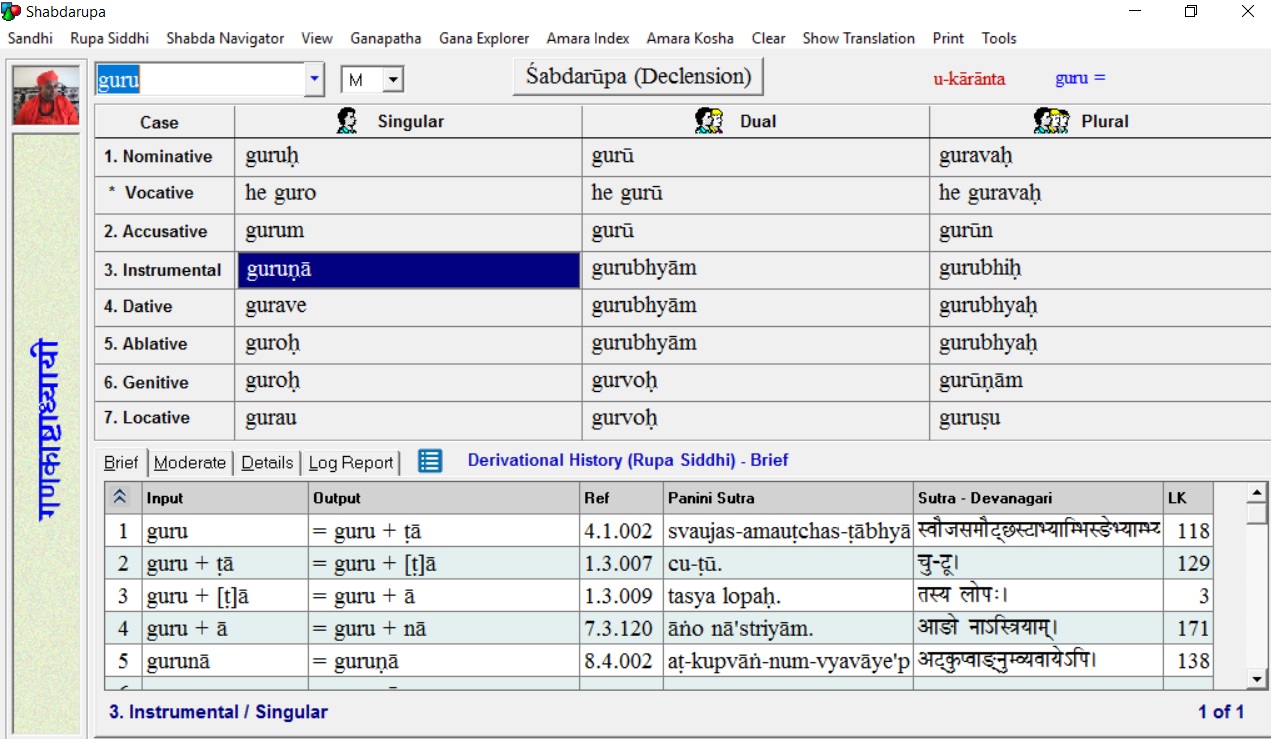
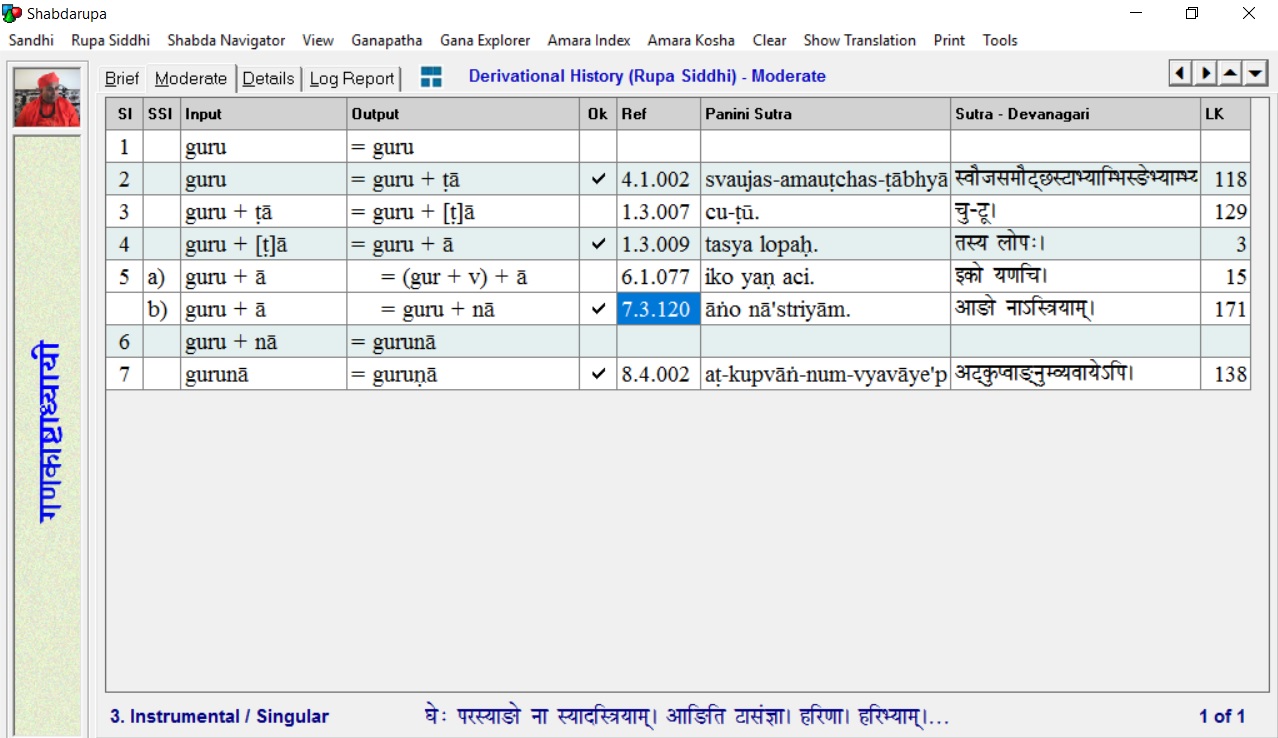
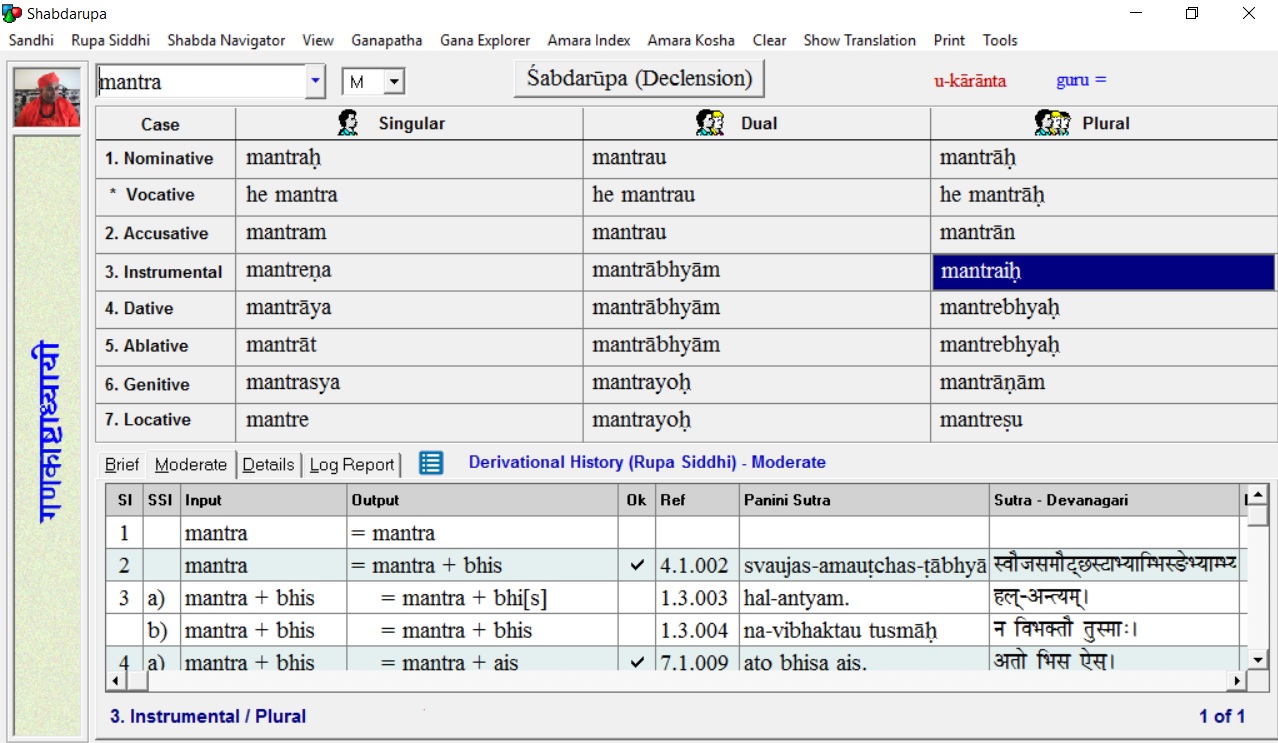
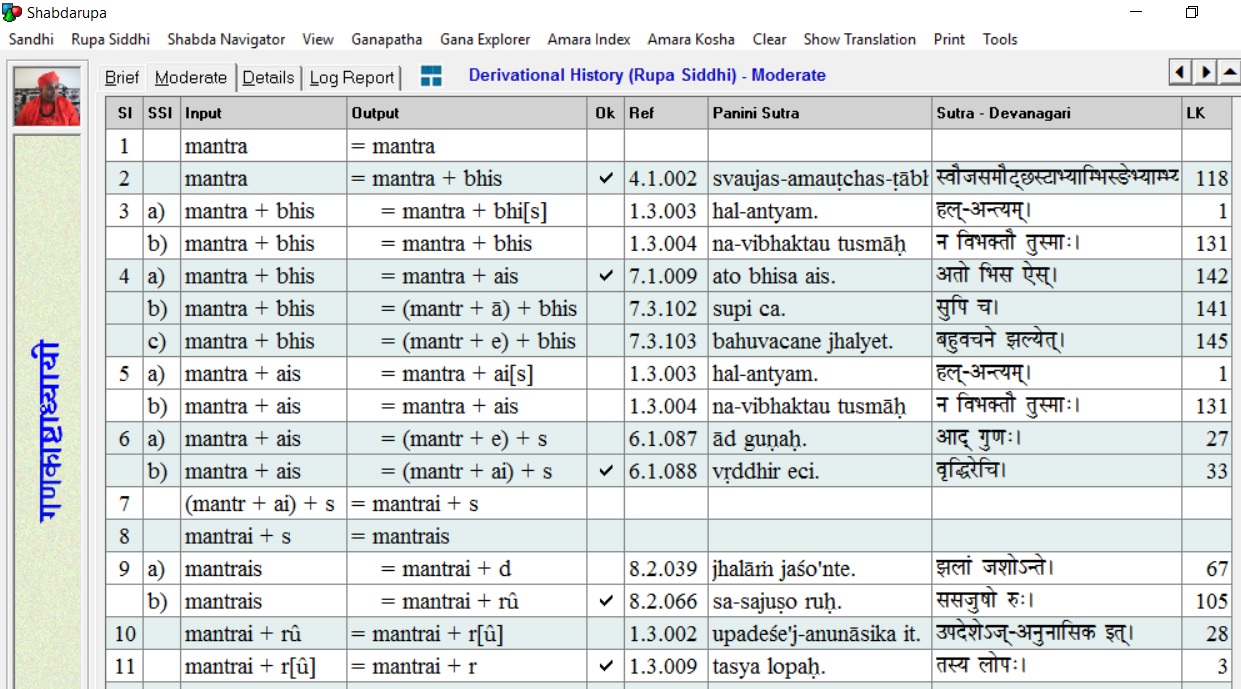

10. See the step number 4(a) of the input mantra + bhis above. The Sutra 7.1.19 ato bhisa ais orders for the replacement of the suffix bhis with ais. The conflict here is not with the Vidhi Sutras 7.3.102 or 7.3.103 to invoke the rule 1.4.2 but with the ‘meta rules’ (Paribhasha Sutras) given below:
1.1.49 - s̟as̟t̟hī sthāne yogā,
1.1.54 - ādeh parasya
1.1.55 - anekāl śit sarvasya.
11. The word bhisaḥ being in genitive case, the meta rule 1.1.49 demands for the total replacement of the suffix bhis with ais. The meta rule 1.1.54 requires the initial segment (bh of bhis) to be replaced with ais. The meta rule 1.1.55 orders for the replacement of bhis in toto with ais. This conflict is resolved by the meta rule 1.4.2 - vipratishedhe param kāryam i.e., whenever there is a conflict between the Sutras, the Sutra of higher number prevails. That is how the Sutra of higher number (1.1.55) is preferred here. Accordingly, the Sutra 7.1.19 ato bhisa ais takes priority and replaces the suffix bhis in toto with ais.
12. Though I had prepared some notes based on the press reports, I was reluctant to release my comments to the press without reading the thesis of this Cambridge University researcher. After receiving a pdf copy of his thesis from Dr K P Basavaraj in Bangalore, I carefully went through the selected pages of the thesis. On pages 23-27 of the thesis, the researcher makes an analysis of the Traditional Perspective and tries to substantiate his stand that the word para used in the meta rule 1.4.2 - vipratiṣedhe param kāryam refers to the right part in a Samhitā and not to the Sutra of higher number as it is understood in the tradition of grammar. He tries to illustrate his standpoint with many examples. One such example is: syona (a sack) derived from the verbal root siv (to stich) He derives this word as follows and points out the fault with the tradition. I am putting it in the form of a table below what he describes in words on page 24 of his thesis:

13. The researcher writes that for the input siū + na (step number 3), two rules are simultaneously applicable. He finds fault with the tradition that by applying the Sutra of higher number (7.3.086), you get a wrong result. In fact, the researcher has a wrong notion that two Sutras are simultaneously applicable here. I strongly deny the occurrence of two Sutras here. When the input siv + na is processed by the Sutra 6.4.019 chvoḥ śūḍ anunānāsike ca, the v of siv is replaced with ū yielding the output (si + ū) + na. As per the grammatical algebra of Panini, the bracketed values (si + ū) have to be processed first in the next step. Here, si becomes the left word and ū becomes the right word which attract the rule 6.1.77 iko yan aci and there is no scope for the rule 7.3.086 pugantalghūpadhasya ca. The application of the rule 6.1.77 yields the output ((s + y) + ū) + na. If you continue to process this in the next steps following the grammatical algebra of Panini, the bracketed values attract no Sutras to apply. All the brackets are resolved and you get the output syū + na. When this becomes the input in the next step, it attracts the Sutra 7.3.084 sārvadhātukārdhadhātukayoh ̣ which replaces ū of syū with o (guṇa) yielding the output (sy + o) + na. Since no Sutra is applicable to the bracketed values, syo becomes the left word to be processed along with the original right word na. Thereafter no Sutra is applied to syo + na and finally you get the correct result syona.
14. If you apply the Sutras of Panini the way the Cambridge researcher wants you to do, there will be more conflicts and you will land in trouble not getting the correct results in other examples. Take for example the nominal stem ‘ramā’ in feminine gender in Vocative case singular (sambuddhi). I give below the snap shot of the derivational history of this word in our software:

15. Read carefully the step numbers 5(a) and 5(b) above where two Sutras are applicable – the Sutra 6.1.68 applies to the right word whereas the Sutra 7.3.106 applies to the left word. If you give priority to 6.1.68 which is applicable to the right word and ignore 7.3.106 which is applicable to the left word as the researcher wants you to do, it deletes ‘s’ of the suffix su. You will land up in getting the wrong result ‘he ramā’ instead of ‘he rame’ and the Sutras of Panini 7.3.106 and 6.1.69 would become redundant.
16. If you give preference to the Sutra applicable to the right part as the researcher wants, you may also get perplexed not knowing which Sutra to select if two or more Sutras are applicable to the right part itself in a given context. See for example the following derivational history of the nominal stem sarva in our software:
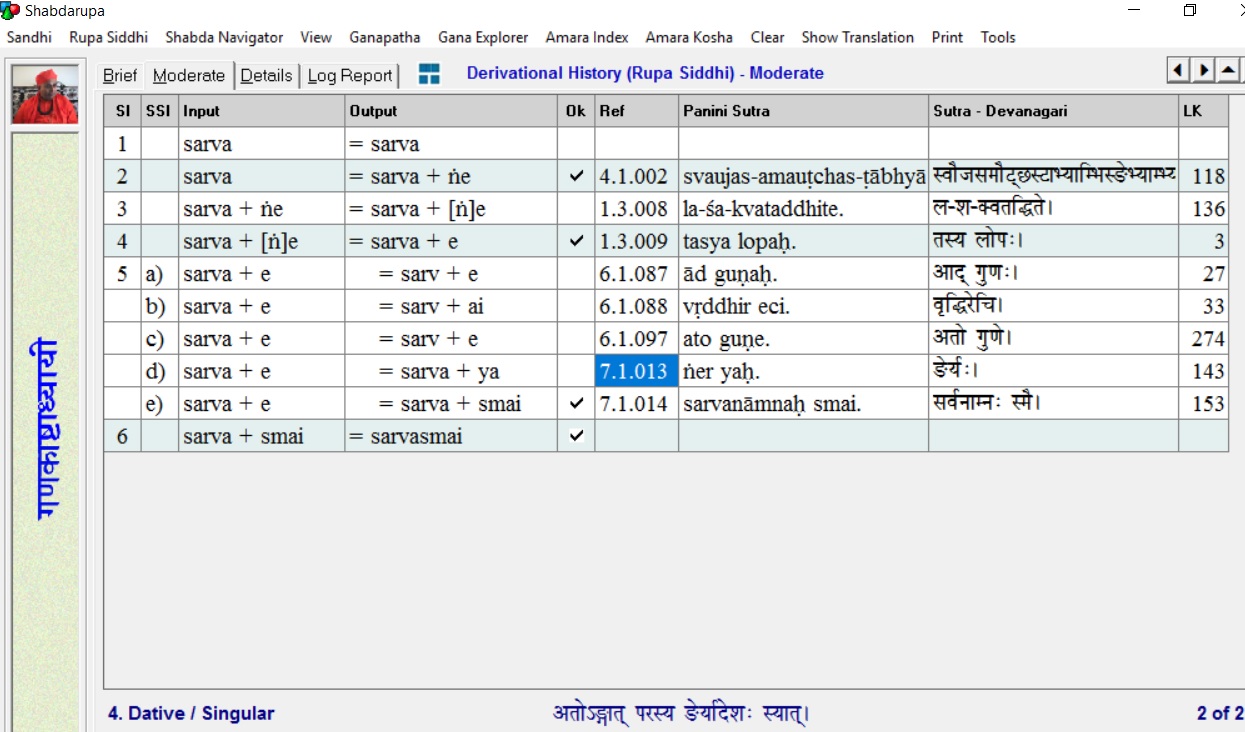
17. See the step number 5 of the input sarva + e in Dative singular. Five Sutras are applicable here. The first three Sutras cause replacement of both the left and right parts whereas the last two Sutras cause the replacement of the right part only. If the preference has to be given to the Sutra applicable to the right part only as the researcher has newly invented, which of the two Sutras (7.1.13 and 7.1.14) are you going to select? Of course, there is no conflict of Vidhi Sutras here to invoke meta rule 1.4.2 - vipratishedhe param karyam. I am curious to read the remaining pages of the thesis for further analysis and comments.
18. The Sutras of Panini (5th Century BC) approximately 4,000 in number appear to me like modern programming codes written by a software engineer. I consider Panini to be the first computer programmer. He has written the Sutras in such a way which excel the modern programming languages. The Sutras have the Variables both local and global, Public Constants, Domain, If…End If, If…Else…End If, Do While...Loop, For…Next, Procedures, Functions, Arrays, Exit and Conflict Resolutions too. The Maheswara Sutras are meant for fixing the standard variables used in his book Aṣṭādhyāyī. A lot of research papers are written on Paninian grammar by modern scholars. Everyone has his own way of understanding the Sutras. Agreements, disagreements and arguments have been going on endlessly. The errors in the research papers written by scholars may easily go unnoticed. But not so in the case of a software in which the errors can be easily detected and debugged for not giving the correct results. In our software Gaṇakāṣṭādhyāyī, I am yet to find a bug in the Sutras of Panini. Once, I did notice a bug in the Sutra eco’yavāyāvaḥ. While processing this Sutra, the last character y and v of the replacements ay, av, āy, av were marked ‘IT’ and got deleted. But I found it clarified in the commentary Bālamanoramā that if they were to be deleted, Panini would not have enlisted them: prakṣālanāddhi pankasya durād asparśanam varam.
19. The Sutras of Panini are wellknown for brevity and this brevity is not at the cost of its meaning. There is no scope for any doubt in any Sutra as it is well defined in a popular śloka in Sanskrit: अल्पाक्षरमसन्दिग्धं सारवत्विश्वतोमुखम् | अस्तोभमनवद्यञ्च सूत्रं सूत्रविदो विदु:| (Sutras are well known to be concise, unambiguous, quintessential, all comprehensive, coherent and unblemished). I am of the strong opinion that the Cambridge University researcher has definitely misconstrued/misinterpreted the meaning of the Sutra 1.4.2 - vipratiṣedhe param kāryam much against this definition of a Sutra. The research guide and professors of this reputed university in the world should have taken care before approving the thesis which is centred around the applicability of this Sutra. The media and the press not proficient in Paninian grammar have blown the whole thing out of proportion and has created sensation in the minds of people across the world as if a great secret of a hidden treasure is unearthed after 2,500 years! There is nothing hidden in the meta rule 1.4.2. After exhausting all the options of Nitya-Anitya, Antaranga-Bahiranga, Utsarga-Apavāda etc, if there still remains a conflict between two or more Sutras where you cannot decide which one to apply; this rule comes to your rescue and advises you to apply the Sutra of higher number. The Kaśika adds the word Tulyabala (of equal force) to indicate the rarest situation of a conflict. On checking the derivational history of 220 standard examples in our software, I find 18,888 number of steps where two or more Sutras are applicable on left/right side or both. In all these steps, the Sutras of higher number are applied. There are only a few instances where the Sutras of lower numbers are applied based on 1.4.2 - vipratishedhe param karyam.
20. The tradition has been put to test for more than 2500 years and it has survived up to this day passing through so many generations in its pristine form. We should be cautious enough before passing any remarks on the traditional inheritance of knowledge. The studies of Sanskrit grammar is the only field where the younger generation is revered more than the older generation unlike the tradition of dharma-gurus where the Guru commands greater respect than his disciple (Shiṣya). Though Panini commands greater respect, the munitrayas namely, Panini, Katyayana and Patanjali stretched over a period of five centuries apart in the history command greater authority in the reverse order (uttarottaram). If there is a conflict between the Sutras of Panini and the Vartikas of Katyayana, due consideration is given to the younger one Katyayana. Similarly, if there is a conflict between Vartikas of Katyayana and the Mahabhashya of Patanjali, the words of Patanjali prevail. This may be because of the growth of Sanskrit language over a period of time they lived in and the scientific approach the ancient grammarians had in recognizing the changes in the language. The traditional studies of grammar had such a scientific outlook. One should be cautious enough in criticizing the tradition when it is based on the firm foundation of scientific approach.
21. The computers have after all artificial intelligence. The brains of the grammatical luminaries of ancient India were undoubtedly super computers of human intelligence par excellence!
- Dr Shivamuthy Shivacharya Mahaswamiji
Sri Taralabalu Jagadguru Brihanmath
Sirigere (Karnataka), India
Email : swamiji@taralabalu.org
Web : www.taralabalu.org
Sirigere
19-12-2022



